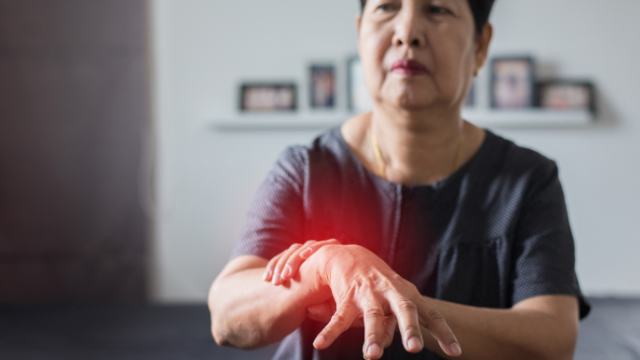Health Blog
Stay mobile with regular physical activity and specific exercises

A health condition that affects the nervous system (a neurological disorder) can completely change the way in how someone interacts with the world around them. Although symptoms vary significantly between neurological disorders, some will go on to affect movement, balance, and coordination.
For many patients, these types of impairments are severe enough that they make functioning in everyday life and performing many basic tasks challenging. In learning of the toll that a neurological disorder can take, then, a common question might be: what can I do to reduce my risk for developing one in the first place?
The cause of most neurological disorders comes from many factors, some of which are out of one’s control (like having genes that increase the chances of getting Parkinson’s disease), while others can be modified. This second category generally falls under the umbrella of lifestyle choices, and quite possibly the best lifestyle change that can be made to prevent neurological disorders is to regularly engage in physical activity and exercise to keep the nerves moving.
How movement benefits the body and the brain
Making exercise and physical activity an ongoing habit is strongly recommended for all individuals to promote and maintain optimal fitness levels. The health benefits associated with this type of behavior are as far-reaching as they are varied, and include improved heart rate and blood pressure, stronger bones and muscles, better weight control, and a lower risk for diabetes, heart attack, and some cancers, to name just a few. But the benefits of regular physical activity go beyond this to include the nervous system and a reduced risk for certain neurological disorders.
The field of research on exercise for preventing neurological disorders is relatively new, but there have already been a number of studies that suggest a protective effect. In one review, several studies were identified that showed there was clearly a lower risk of suffering from a stroke or developing Parkinson’s disease or dementia later in life for individuals who were regularly physically active compared to those who were physically inactive. Another study showed that individuals who exercised the most prior to a stroke were 2.5 times more likely to have a milder stroke and twice as likely to have better long-term outcomes than those who exercised the least.
- For stroke risk, the protective effect may be due to the fact that exercise helps to lower high blood pressure, which is an important risk factor for stroke
- As for Parkinson’s disease, research has shown that exercise may cause the brain to more efficiently use dopamine, which is the chemical that is not produce enough with this condition; exercise may also improve efficiency by modifying areas of the brain where dopamine signals are received
Other research has suggested that regular physical activity may reduce the risk of multiple sclerosis to a modest degree compared to those with the lowest levels of activity, although additional research is needed to support this.
As for how much physical activity is needed, the American Heart Association, CDC, and most other established guidelines recommend that adults aim for the following each week:
- At least 150 minutes of moderate-intensity physical activity, like brisk walking
- At least 75 minutes of vigorous-intensity physical activity, like jogging
- At least two sessions of muscle-strengthening exercises
OR
AND
Specific exercises can also improve the mobility of nerves
Another great way to of maintaining the health of some of your peripheral nerves is by performing specific exercises that target them. Neurodynamics, also known as nerve gliding or nerve flossing, is the practice of doing gentle exercises that maintain the health of nerves and restore their mobility if it has been lost. Nerve gliding exercises are effective for treating a number of nerve issues, but they can also be used to improve the mobility of three major nerves of the arm (ulnar, median, and radial nerves), the sciatic nerve, and the brachial plexus nerve. Below are examples of one nerve gliding exercise for each of these nerves:
- Ulnar nerve: put your index finger and thumb together to form an “OK” sign, then flip your hand as far as you can so that your palm moves to face upwards; you should feel the stretch on the outer part of your arm; repeat 10 times
- Median nerve: put your arm out straight to the side with your palm facing up; keep your fingers straight and then move your wrist to bring your fingers down towards the ground; to add more to the stretch, tilt your neck in the opposite side of the arm being stretched; repeat 10 times
- Radial nerve: put your arm out straight to the side with your palm facing down; keep your fingers straight and move your wrist to bring your fingers up; to add more to the stretch, tilt your neck in the opposite side of the arm being stretched; repeat 10 times; for examples of each of these exercises, click here
- Sciatic nerve: this large nerve runs from the lower back down into the foot; to stretch it, lie on your back and hold one leg at the knee; next, attempt to straighten your knee and hold it, then bend your ankle back and forth 10 times
